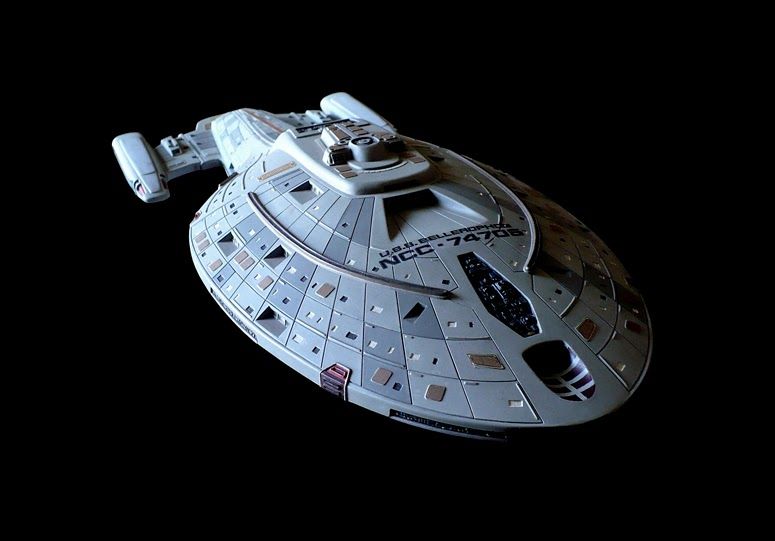INTREPID CLASS
ENTERED SERVICE: 2371
OVERVIEW:
 By the mid-2360s the success and failures of the Galaxy class were clear to Starfleet. Its large size and crew along with increasing use as a diplomatic vessel rather than exploratory craft made engineers in Starfleet begin designing the next great explorer, the Intrepid class. This first of its class was launched in 2371 to great fanfare and was quickly seen by the Federation Science Council as a valuable resource. It is small compared to the Galaxy class, more closely resembling a Constitution class, but contains the best technology available to the Federation.
By the mid-2360s the success and failures of the Galaxy class were clear to Starfleet. Its large size and crew along with increasing use as a diplomatic vessel rather than exploratory craft made engineers in Starfleet begin designing the next great explorer, the Intrepid class. This first of its class was launched in 2371 to great fanfare and was quickly seen by the Federation Science Council as a valuable resource. It is small compared to the Galaxy class, more closely resembling a Constitution class, but contains the best technology available to the Federation.
CAPABILITIES:
The sleek curves of the Intrepid class weren’t just a stylistic choice, they assisted the variable geometry warp nacelles in producing a tight warp field over the starship with a steep and stable field gradient in even turbulent space-time conditions, giving these vessels both an impressive warp acceleration and stability. These features, along with the vessels primary class-9 warp drive and its secondary warp assembly allowed the class an impressive top speed of warp 9.975. While its sustained warp speeds are considerably slower, they are still fast enough to allow Starfleet to hail the design as its new deep-space explorer. To aid in this role, Intrepid-class vessels are also equipped with the best technology in the Federation, including the newest generation of multi-spectral subspace sensors linked into the most powerful shipboard computer yet in service in Starfleet. This computing power is possible through a breakthrough in the use of bio-neural circuitry, allowing the vessels’ computer to form information connections in a faster and more natural way, giving the main computer the unique ability to adapt to new and confusing situations as well as improvise solutions much like sentient life-forms. This increased computer power allows the Intrepid class more automation than many Starfleet vessels, keeping the typical crew rosters down to between 130–150 officers and crew. As it’s a deep-space exploratory vessel, all Intrepid-class starships have an impressive amount of tactical systems as standard, the reasoning being that it would be operating far from any other allied starships and may need to defend itself against multiple attackers. The Intrepid class has thirteen type-10 phaser strips, an additional four type 8 phaser emitters, and five torpedo launchers (two forward, two aft, and one ventral launcher that is typically only loaded with probes). To further planetary exploration, all Intrepid-class vessels are assigned at least four type-6 or type-8 shuttlecraft in addition to the class-specific aeroshuttle that is located on the ventral side of the primary hull. For crew recreation, new high resolution holo-emitters and integrated replicator systems made holodecks power efficient and able to create permanent matter in the simulation to prevent continual holo-emitter use and degradation. These same holo-emitters are also installed in the sickbay, allowing the new Emergency Medical Hologram system (EMH) to assist medical personnel when they require it.
